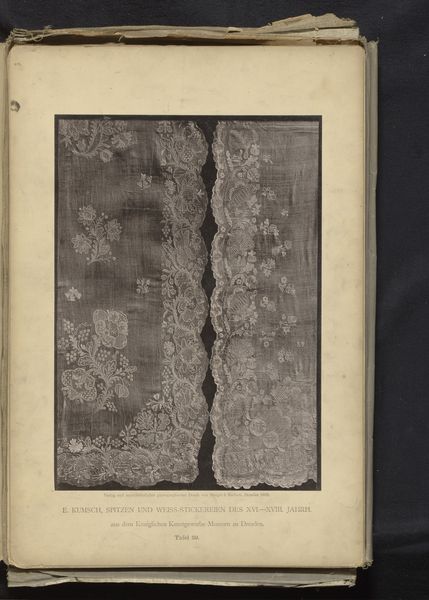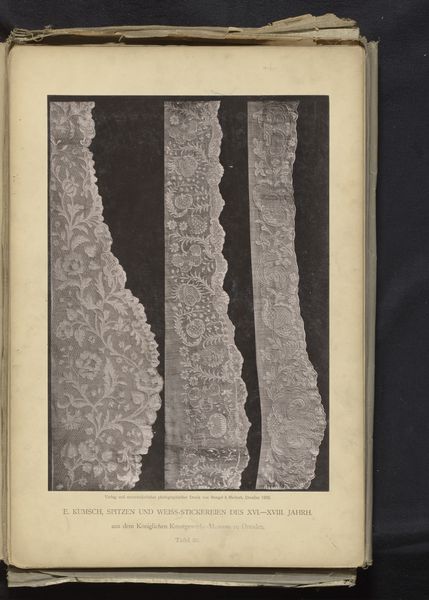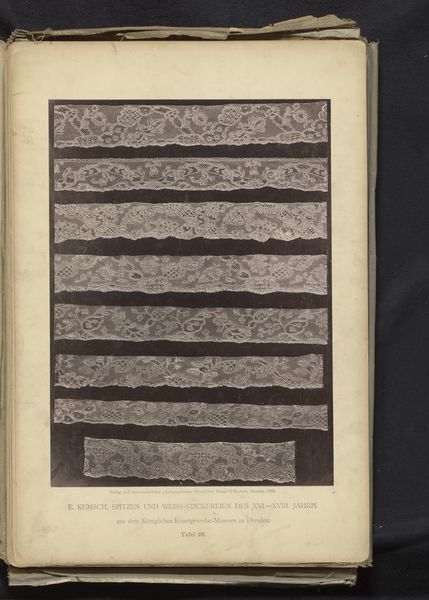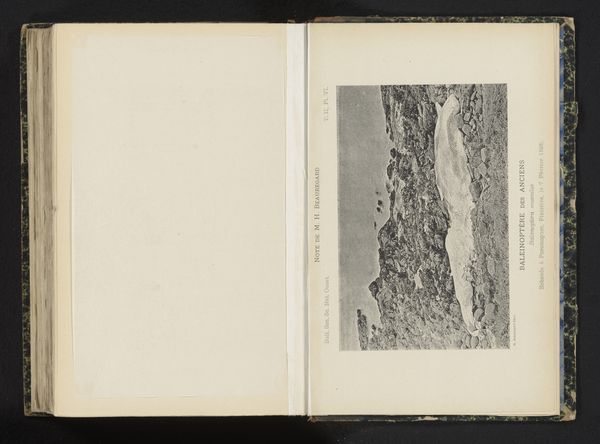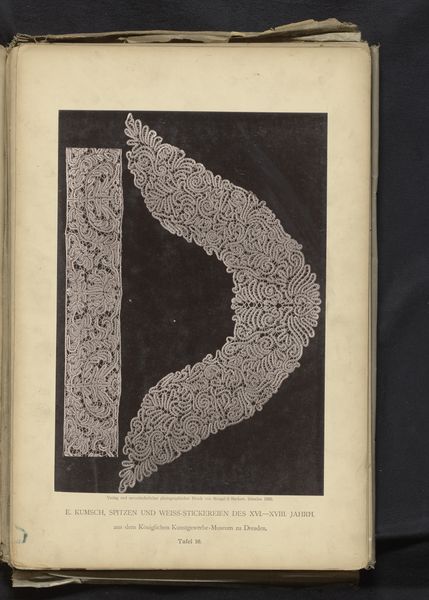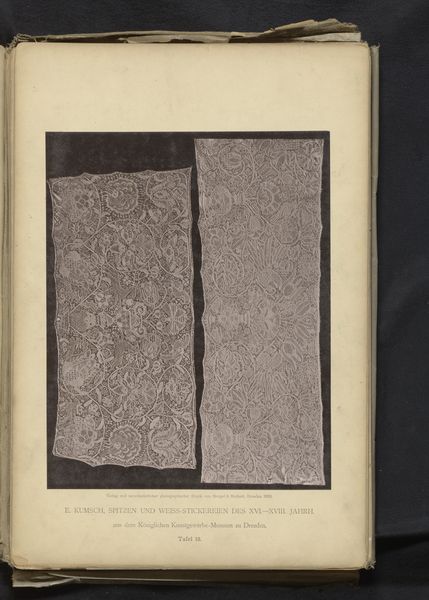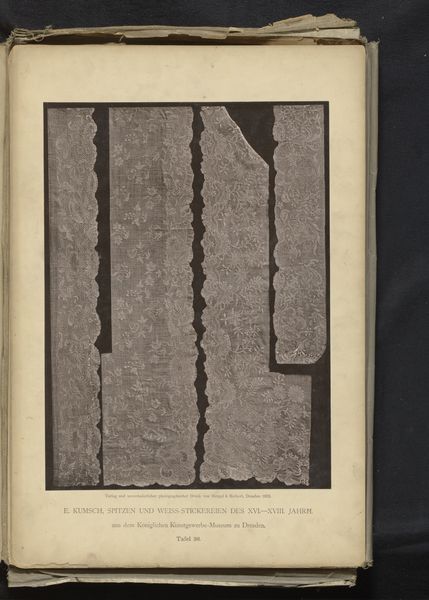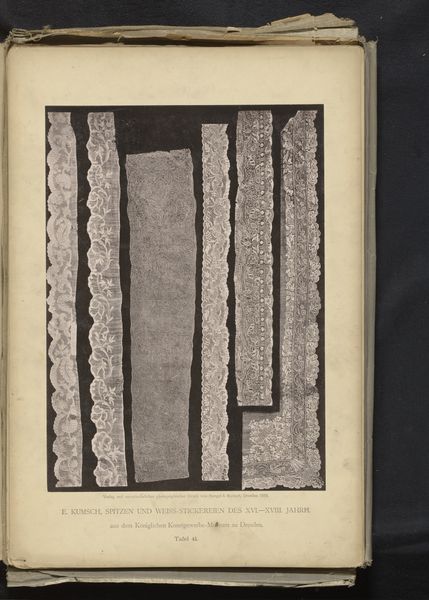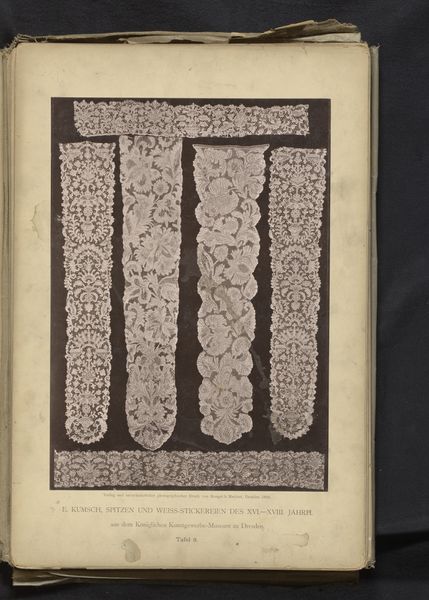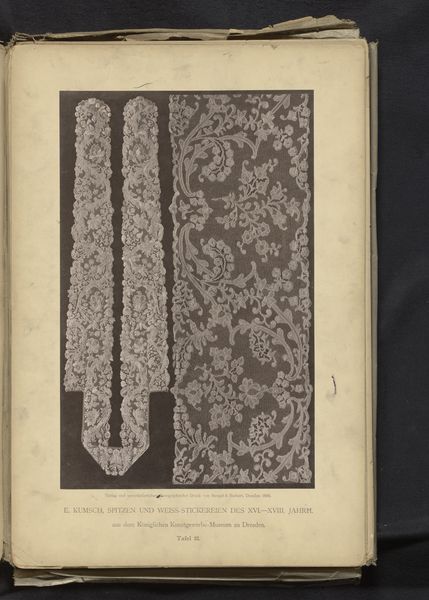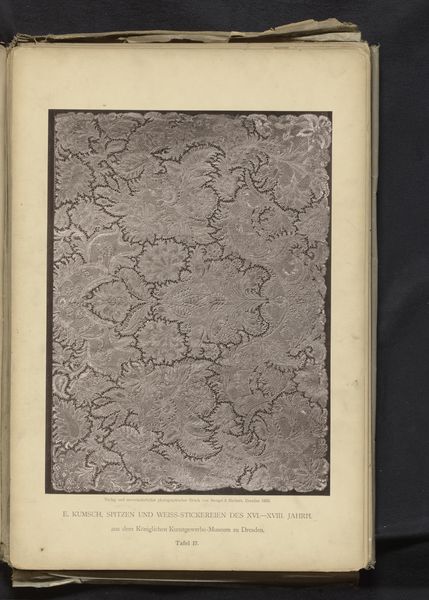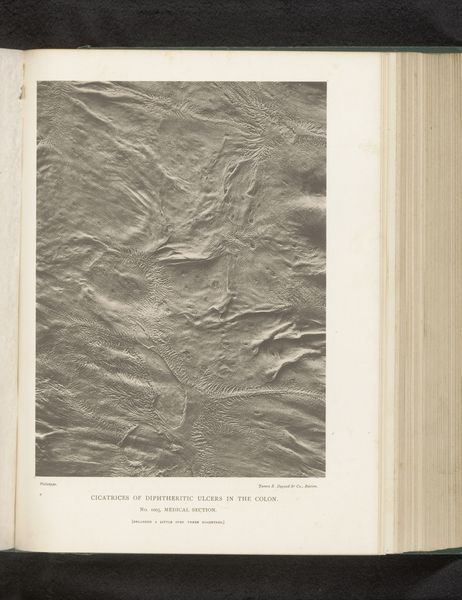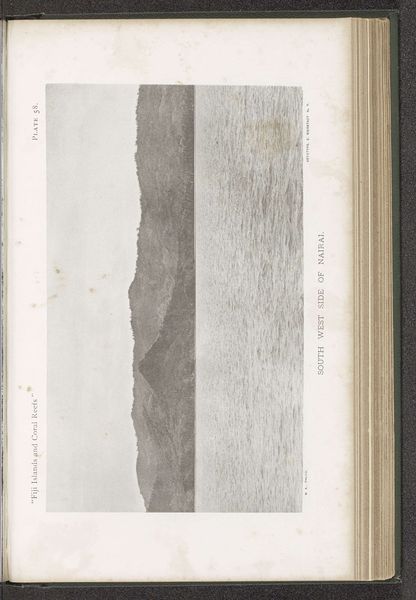
Vier stukken Duits kant uit circa 1770, uit de collectie van het Kunstgewerbemuseum in Dresden, Duitsland 1888
0:00
0:00
print, photography
# print
#
photography
#
decorative-art
Dimensions: height 341 mm, width 233 mm
Copyright: Rijks Museum: Open Domain
Curator: I’m immediately struck by the stark contrast and delicacy of these lace samples. The intricacy practically leaps off the page. Editor: We are looking at a print titled “Vier stukken Duits kant uit circa 1770, uit de collectie van het Kunstgewerbemuseum in Dresden, Duitsland.” The photograph, from 1888, showcases four pieces of 18th-century German lace, carefully arranged and documented. This kind of archival record is very important to observe art's history. Curator: "Document" is key here. Look at the way the black background emphasizes the texture, the dimensionality of the lace itself. Each floral pattern and delicate curve seems almost three-dimensional. You almost forget it's just a photographic print. Editor: It is interesting how photography appropriates other production methodologies as subjects: textiles as a prime example. How were these laces perceived then? What labor did their construction involve, who wore them? And how did the rising power of the industrial processes affect such meticulous work, like this 18th-century craftsmanship documented photographically here? Curator: I agree with your observations. In that period, luxury goods functioned as signifiers of class, they showed one's elevated rank. And this type of photograph allowed these luxury products to enter new networks and social structures. I believe these photographs democratized access to craftsmanship that would have remained behind the walls of privileged elites. Editor: Democratization, maybe. But access still required access to printed media and spaces where these archives were available. Also, do you consider that photography created a sense of scarcity in relation to the artifact? Its materiality is obfuscated, and a photographic representation only serves to heighten its fetish value as the real item decays or remains exclusive. Curator: That's an interesting consideration – photography almost creates an echo of the original value by its recording of these rare pieces. Overall, this print speaks volumes about preservation, display, and how we ascribe value to both the creation and recording of these fragments of history. Editor: It seems that documenting the ephemerality, the social life of crafted things –like lace, helps preserve these works, and keep in discussion the role of craftsmanship in our visual culture.
Comments
No comments
Be the first to comment and join the conversation on the ultimate creative platform.
